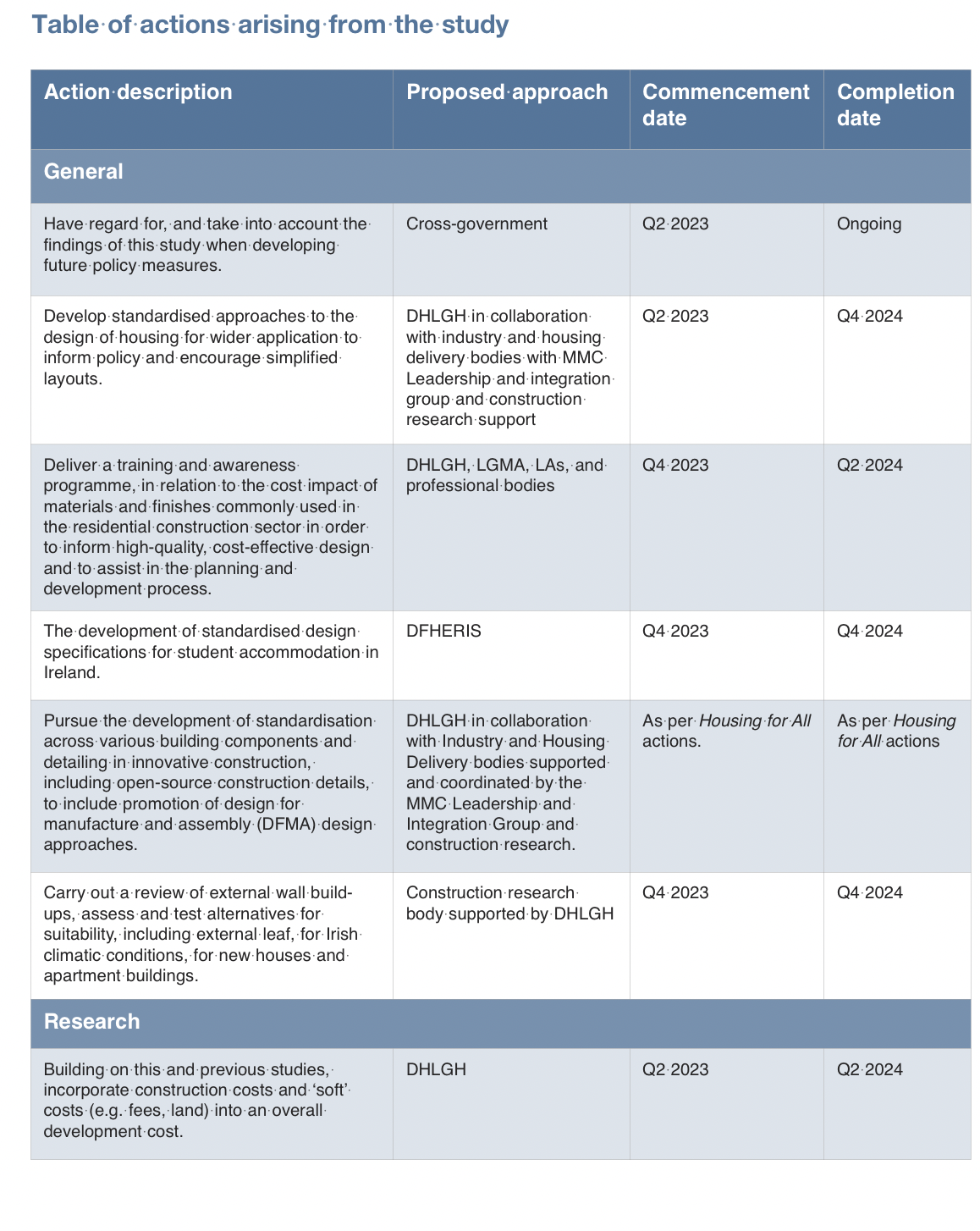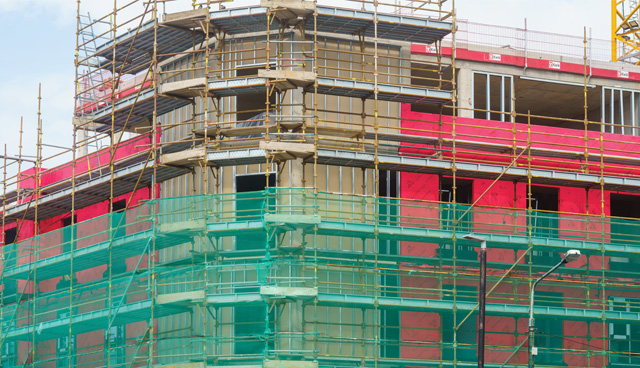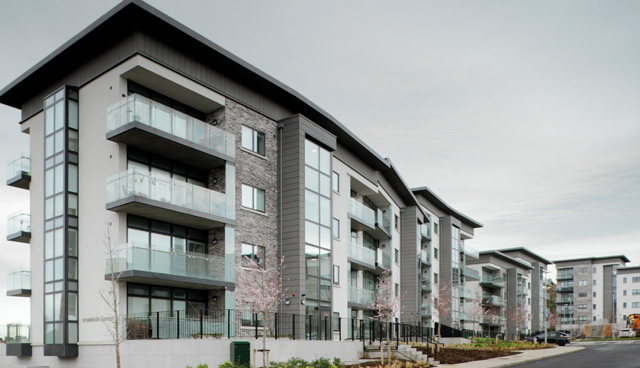
Housing sector legislative update
18th July 2023
Four years of the OPR
18th July 2023Capital’s house building costs among highest in Europe

A report released by the Department of Housing, Local Government and Heritage has found construction is more expensive in Dublin than comparable cities in Germany, the United Kingdom, Denmark, and the Netherlands.
Published in May 2023, the Residential Construction Cost Study Report compares the cost of construction in Ireland’s capital with four benchmark European cities. The cities are Utrecht; Berlin; Copenhagen; and Birmingham.
The study complements a range of other actions in Housing for All to help achieve economic sustainability including the development of modern methods of construction. Actual construction costs in Ireland account for approximately 50 per cent of overall residential development costs. The Department has further stated that the study’s findings will also be used to inform future policy and initiatives.
The study examines costs and differences in design and construction on each of the four case study projects, using the ‘travelling box’ methodology (the same dwelling built to an Irish specification costed in selected locations). It also examines typical European housing types in the four comparator locations and associated cost ranges.
“There are challenges to international construction cost comparisons,” the report states, adding that “this is because each country/region adopts different approaches to design, construction and to reporting on construction to varying degrees.
“For example, construction costs in some European countries are reported based on gross external floor area, which can be 8-10 per cent larger than gross internal floor area; whereas in Ireland, conversely, costs are reported based on gross internal floor area.”
“By building on this report with its actions combined with the other initiatives in Housing for All, government continues to work to place housing delivery on a long-term economically sustainable footing, helping to ensure affordable and high-quality housing for all.”
Minister for Housing, Local Government, Darragh O’Brien TD
Houses in Dublin and Birmingham
In the first case study, the ‘travelling box’ exercise found that construction costs using Irish specifications on a cost-per-m2 rate for the same scheme house were approximately 15 per cent lower in Birmingham than in Dublin.
Lower construction costs were also evident in Birmingham for an actual scheme house when built using the typical specifications for Birmingham. The cost-per-m2 rate was between 6 and 10 per cent lower in Birmingham than Dublin and the cost-per-unit basis was between 21 and 29 per cent lower in Birmingham than in Dublin, which the report explains is “due to a number of factors”.
Cost comparison indicates that the United Kingdom has a lower construction cost due to local market conditions and labour costs. This applies to both the travelling box and actual scheme houses. Design comparison indicates differences in scope, unit sizing and specification, which lead to a lower cost in Birmingham than Dublin for actual scheme houses.
On scope, it is uncommon for ensuites or fitted wardrobes to be included in a three-bedroom semi-detached house in Birmingham. On unit sizing, the benchmark sampling for this study indicates that houses being delivered in Birmingham are up to 15 per cent (93m2 vs 110m2) smaller than Dublin. This is notably a smaller difference than the difference in cost between Dublin and Birmingham.
Suburban and urban apartments
Cost ranges for apartment buildings are lower in Copenhagen, Berlin, and Utrecht, the report found. Lower construction costs were evident in Copenhagen, Berlin, and Utrecht than Dublin and Birmingham for apartment buildings when built using the typical specifications for those locations on a cost-per-m2, rate with differences of up to 30 per cent identified.
The report also states that cost and design comparison found differences in scope, size, and specifications in Copenhagen, Berlin, and Utrecht.
On the design comparison, cost differences were identified related to differences in scope, unit sizing and specification. It is common in Copenhagen, Berlin, and Utrecht to sell or rent apartments with exposed concrete slab (bare ceilings), no floor finish, no fitted wardrobes, no light fittings and sometimes minimal or no fitted kitchen.
In addition, it is common for apartments to have a single bathroom shared between two or three bedrooms and no ensuites. The report makes clear that some of these scope and specification choices are market driven, and some may require further assessment in relation to achieving technical performance requirements including sound, hygiene, and fire.
Additional cost burdens
The report states that building services costs were found to be higher in Dublin than all other locations in the study across all dwelling types. Amongst one of the main areas of difference, district heating, i.e. Copenhagen, as opposed to site-based heat generation, which is adopted in Ireland.
In terms of student accommodation, the report states that, in addition to a higher cost burden, there is a lower comparable standard of living in Irish student accommodation, as the standard model adopted in European cities such as Berlin and Utrecht encompasses wider usage of studio apartments, whereas dormitory-style living conditions remain far more prevalent in Dublin.
To tackle this, the report recommends that a standardised design process is outlined. “National design guidance for student accommodation would inform design approaches. A range of design options for students would be preferable, including small studios and clustered bed-spaces, both with and without ensuites.”
The Department of Housing, Local Government and Heritage has stated that it will take the findings of the report into account when considering all future housing policy. Upon the report’s publication, Minister Darragh O’Brien TD said: “By building on this report with its actions combined with the other initiatives in Housing for All, government continues to work to place housing delivery on a long-term economically sustainable footing, helping to ensure affordable and high-quality housing for all.”







